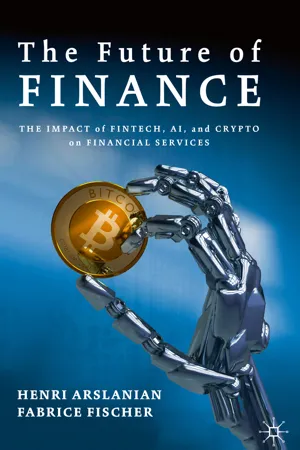
The Future of Finance
The Impact of FinTech, AI, and Crypto on Financial Services
- English
- ePUB (mobile friendly)
- Available on iOS & Android
The Future of Finance
The Impact of FinTech, AI, and Crypto on Financial Services
About this book
This book, written jointly by an engineer and artificialintelligence expert along with a lawyer and banker, is a glimpse on what the future of the financial serviceswill look like and the impact it will have on society.
The first half of the book provides a detailed yet easyto understand educational and technical overviewof FinTech, artificial intelligence and cryptocurrenciesincluding the existing industry pain points and thenew technological enablers.
The second half provides a practical, concise andengaging overview of their latest trends and their impacton the future of the financial services industryincluding numerous use cases and practical examples.
The book is a must read for any professional currentlyworking in finance, any student studying the topicor anyone curious on how the future of finance willlook like.
Frequently asked questions
- Essential is ideal for learners and professionals who enjoy exploring a wide range of subjects. Access the Essential Library with 800,000+ trusted titles and best-sellers across business, personal growth, and the humanities. Includes unlimited reading time and Standard Read Aloud voice.
- Complete: Perfect for advanced learners and researchers needing full, unrestricted access. Unlock 1.4M+ books across hundreds of subjects, including academic and specialized titles. The Complete Plan also includes advanced features like Premium Read Aloud and Research Assistant.
Please note we cannot support devices running on iOS 13 and Android 7 or earlier. Learn more about using the app.
Information
Part I
The Fundamentals of a Rapidly Changing Technological Landscape
1. The Digital Triumvirate of Computation, Data, and Connectivity
Table of contents
- Cover
- Front Matter
- Part I
- Part II
- Part III
- Part IV
- Part V
- Part VI
- Correction to: The Future of Finance
- Back Matter